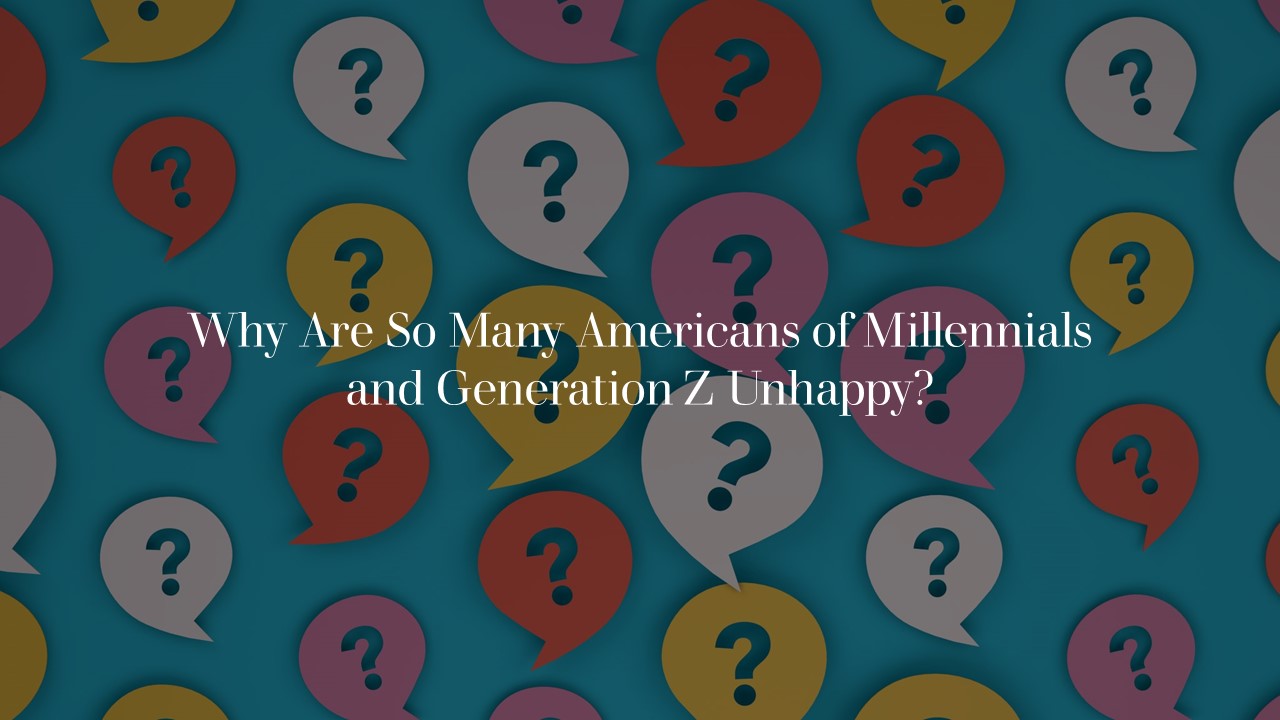There has been a recent decline in the level of happiness and well-being among the American population, and young men and women from Millennials and Generation Z are leading the downward spiral. American Millennials and Generation Z are currently the most unhappy in the United States, according to a new survey.
What the 2024 World Happiness Report Revealed
The World Happiness Report of 2024 revealed that self-reported data from those under the age of 30 knocked the United States out of the top 20 happiest countries for the first time since the annual report’s inception in 2012.
It is worth noting that young people in Canada and other English-speaking countries also reported a decrease in happiness.
Different from this pessimistic tendency, young women and men in many other countries have an increase in their feelings of well-being. The report revealed that young people in central and eastern Europe, as well as certain regions of sub-Saharan Africa, experienced a rise in their level of happiness.
We still don’t fully understand why young people in these regions experience a different trend from those in the U.S., Canada, and other English-speaking countries. Their findings, however, indicate that this declining trend in happiness is not global.
What Makes the Current Young Americans Unhappy?
Key factors that significantly contributed to the rapid decline included young people’s dissatisfaction with their living conditions, social support systems, diminishing trust in the government, and a perception of reduced personal freedom in making life decisions.
As journalist Christopher Cann from “USA TODAY” commented, young Americans said that they were unhappy and disappointed because of the economy, the cost of housing, student loan debt, political polarization, social media, climate change, and the war in Gaza.
Women and men of Millennials and Generation Z Gen mentioned that several things, from high rent and debt to the comparison culture on social media, had left them feeling tired and unhappy.
Researchers agree that the trends in the decline in the feeling of happiness among young people in the USA, Canada, and some other English-speaking countries are worrisome.
A combination of factors, rather than a single cause, can be responsible for the decrease in life satisfaction among young men and women. Individuals’ physical well-being, academic performance, involvement in community activities, and financial income correlate with their happiness and satisfaction levels.
Among other things, an epidemic of loneliness makes young Americans unhappy. Experts have also expressed concern about an epidemic of loneliness among teenagers and young adults in America. This psychological experience has surged alongside an increase in virtual schooling and remote work, particularly after the COVID-19 pandemic.
What Can We Expect in the Future?
According to researchers, one of the most reliable indicators of adult happiness is the level of happiness experienced during childhood and adolescence. This correlation raises concerns that American teens and young adults’ discontent may only worsen as they get older.
Typically, the level of happiness is highest among young individuals and decreases to its lowest point during middle age (40–60) before gradually increasing again as individuals approach retirement and old age—a phenomenon commonly referred to as the U-shape.
Over the course of several years, experts have observed a gradual decrease in variation in the United States. However, this year, the extent of this decrease has become extreme and very recognizable.
As Laurie Santos, a psychology professor at Yale University, stated:
“Honestly, I look at these data with terror, not just because of what they reveal about our country right now, but what they will reveal about our country in the future unless we change this pattern”
What Can Be Done to Make People Happier?
Both external (socioeconomic) and internal (personal) factors influence how men and women feel and experience life—happy or unhappy.
It is evident that there are several economic and social changes that society can implement to support the healthier and happier development of young women and men.
Nevertheless, young people have their own ability to improve their own well-being. Extensive research has consistently demonstrated that people can enhance their satisfaction in life and happiness by engaging in certain behaviors. These include increasing face-to-face social interactions, practicing self-compassion, and allocating dedicated time away from work, school, and other responsibilities.
The Power of an Individual Choice
Here’s an example from Christopher Cann about what young Americans believe causes them to be unhappy.
Ashlie Marchant, a second-year student at the University of Central Florida, recognized social media as the primary catalyst for discontentment in her own life and the lives of her friends. She deleted TikTok from her mobile device. She attempts to resist the compulsion to scroll on the screen.
“I’m trying to lean off of social media. It’s so easy to get caught up in it, and all it does is make me unproductive and upset.”
Marchant, age of 20 years, said.
Marchant preferred to read a paperback novel while sitting in a public park. She expressed her adoption of tangible forms of media, such as film photography and vinyl records.
